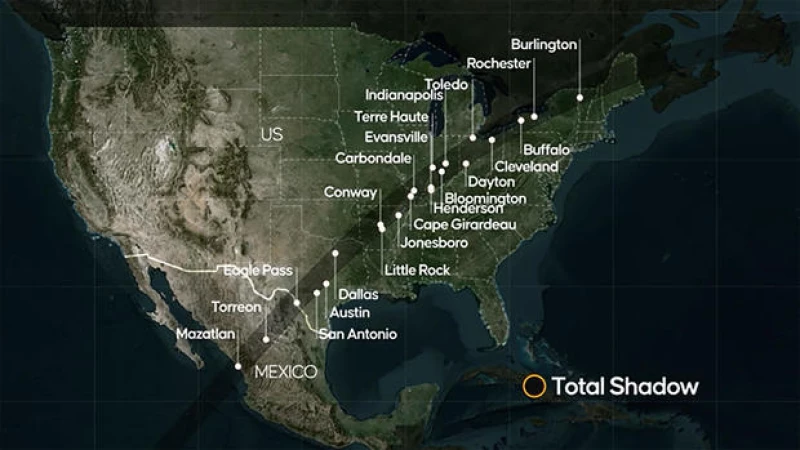Mark your calendars for April 8th, when a mesmerizing total solar eclipse will cast a "path of totality" over North America, plunging parts of the United States, Canada, and Mexico into darkness during daylight hours.
During a solar eclipse, the moon moves between the Earth and the sun, momentarily obscuring our view of the sun. When the moon completely blocks the sun's light, it's known as a total solar eclipse. These occurrences are quite rare and can only be observed in specific locations for brief periods.
The path of totality for the upcoming 2024 total solar eclipse will stretch from Texas to the East Coast. Cities such as Dallas, Texas; Buffalo, New York; and Burlington, Vermont, are expected to offer prime viewing opportunities — weather permitting.

How frequently do total solar eclipses occur?
Total solar eclipses are infrequent, with those visible from the United States being particularly rare.
These events take place approximately once every one to three years somewhere on the planet, although they are often only observable from the Earth's poles or the middle of the ocean.
A variety of factors contribute to the enjoyment of a total solar eclipse. Clear skies are essential to ensure that the phenomenon is not obscured by clouds, and only those within the path of totality will experience the full effect of the sun being obscured. Individuals outside the path of totality can still witness a partial eclipse, where the moon covers some, but not all, of the sun, as indicated by NASA.
The most recent total solar eclipse visible from North America occurred in 2017. Various parts of the United States, ranging from Oregon to South Carolina, had the opportunity to witness this rare event. Before that, the last total solar eclipse visible in the United States happened in 1979, with only five states falling within the path of totality.
When is the next total solar eclipse anticipated to happen?
The upcoming total solar eclipse is scheduled for August 12, 2026, as stated by NOAA. This eclipse will be observable from the Arctic, eastern Greenland, northern Spain, and Iceland.
For those interested in witnessing a total solar eclipse in the United States, a significant wait is ahead. A total solar eclipse is not expected to take place in the contiguous U.S. until August 2044.






